Do you wonder what happens to the items you put in your recycle bin? Or, how are these items recycled? Recycling programs vary for different cities and states. When you know the recycling process of your locality, you can help in the smooth running of the system. By knowing this, you can ensure that the waste you put in the recycle container does not go to the landfill.
In this article, you will find a detailed guide on every part of the recycling process. The key steps provided here give you a clear idea of recycling and how does it work. Let’s dive in!
How does recycling work in the US?
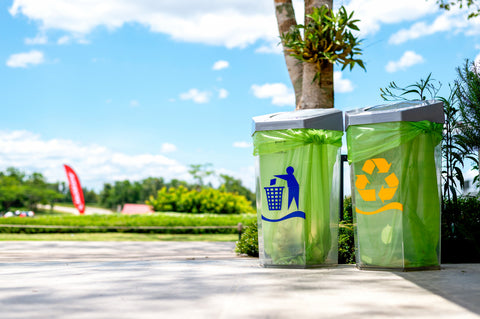
The recycling method differs by locality and the recycled commodity. But, it involves three steps:
- Collection: A government entity collects the recyclable items that you generate. Sometimes a private hauler also takes care of the collection process.
- Processing: The collection truck takes the materials to a processing center. It is called MRF (Materials Recovery Facility). This facility sorts the recyclables and removes the contaminants in them.
The next step is the transportation of the objects to a milling plant. Or, they take them to a manufacturing facility. Glass items go to the glass beneficiation plants. Plastic materials go to the plastic reclaimers. The facilities then convert these into mill-ready forms.
Key recycling steps recycle bin items undergo
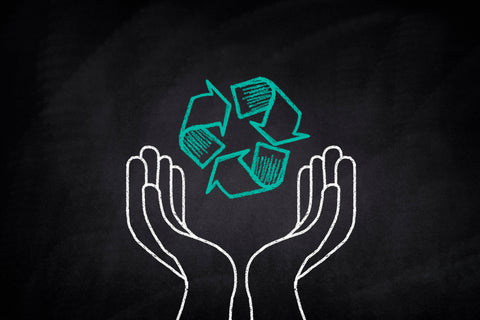
In a typical material manufacturing process, two main things are happening:
- The manufacturing unit uses raw materials for making products.
- The unit throws away leftover materials.
The above two steps form a linear process. The entire process of mining, production, consumption, and disposal has led to a big crisis.
To reduce the impact of the huge amount of waste, the materials you do not need or want get remanufactured. As a consumer, you may have many questions like:
- How do I recycle?
- Should I take the recyclables to the recycle facility?
- Will the recycling facility collect the items from the curbside?
Step #1: Sorting the recyclables
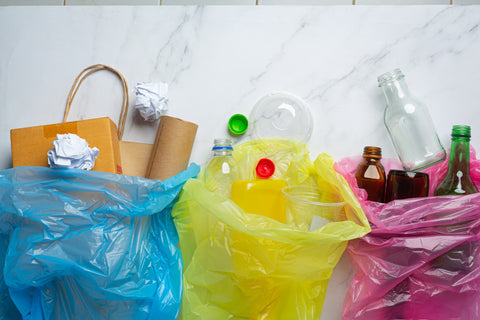
The first step is separating the materials into recyclable products and items you throw away or reuse. A trash and recycling bin combo would help in making the separation easy.
You need to collect yard debris in a separate bin. This helps in sending the contents to yard debris depots or composting centers. Plus, it reduces the volume of waste you send to the landfill.
Some common recyclable materials you can gather for curbside collection include:
- Paper items: This includes office paper, newspaper, egg cartons, and more
- Glass items: All bottles and jars made of glass
- Metal items: Food containers and cans made of aluminum and tin cans
- Plastic items: Jugs, bottles, and tubs with the #5 resin code are recyclable
- Other items that are recyclable include pallets, motor oil, tires, batteries, and e-waste
Are all types of plastics recyclable?
Most plastic packaging items are recyclable. But, recycling plastics is a difficult process. This is because of the different resin types present for plastics.
To recycle plastic materials, you have to melt them first. Then, you need to convert them to their original petrochemical form. The gaseous form helps make a new product. This conventional method is expensive.
Resin types can contaminate one another. This is why plastics of different types have different resin codes. The numbers 1 to 7 denote the specific plastic, depending on the resin type they belong to.
But, even with the numbering system, it is still difficult to recycle plastics. For instance, take plastic bottles and tubs with the same code. They have different melting temperatures. So, you cannot recycle them together.
Step #2: Collection Systems
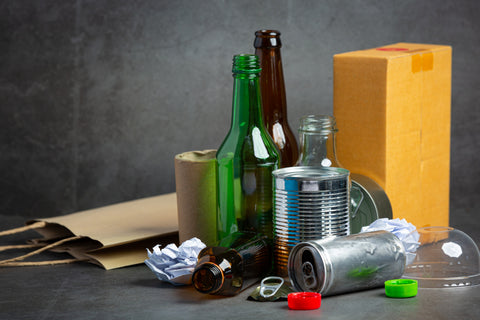
The second step is the collection of recyclable items. Different systems help to do the material collection.
Material Recovery
In this type of collection, manual and mechanical methods are present. They help remove recyclables from mixed waste. The mechanical method uses properties like size, color, and density to separate. This collection type does not need people to sort the items that can be recycled.
Source Separation
In this collection category, sorting of recyclables occurs at the generation point. This can be at work or home. Separate recycling containers help to sort the different recyclable items.
Mixed Recycling
Source separation of recyclables makes it difficult for garbage collectors. To avoid this, they follow the mixed recycling program. All recyclable items go into a single plastic recycling bin.
Items like glass waste and motor oil have separate collection bins. Here, you need a separate container for collecting yard debris. This method makes it easy for people to recycle. You need not confuse which items go into which bin.
Step # 3: Picking up the recyclables
There are a few common ways recycling facilities use for the collection of materials. They include the following:
- Deposit system: In this system, you get a refund for returning recyclable items. These include items like aluminum cans, glass, PET bottles, and more. In Oregon state, for instance, the deposit amount per container is 10 cents.
- Depots: In this system, depots help collect the recyclables, which curbside programs reject. Many rural residents and those in apartments use this system. In some places, drop boxes serve as collection spots for newspapers.
- Curbside collection: Households get a plastic recycling container from the collection center. The municipal or commercial haulers collect the recyclables from these containers. Some companies even pay for the recyclables they collect from businesses.
- Buy-back counters: Recyclable materials of high value can fetch you some money. The buy-back centers pay you money for delivering recyclables of good quality. These include metals, car batteries, and more.
Step #4: Processing the materials
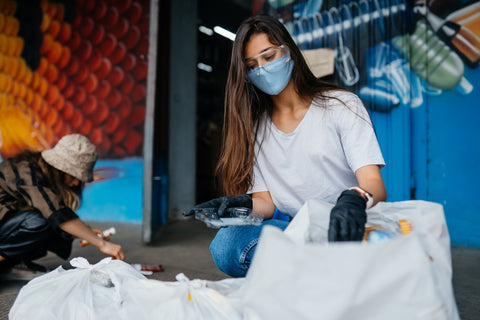
Once the recyclables are at the facility, they need further sorting. This helps to process them in a cost-effective way. For instance, they separate newsprint, plastics, and other contaminants from office paper.
When sorting is over, the materials undergo compaction. The facility condenses them for easy transportation to the remanufacturing unit. For instance, they crush glass to cullet form, while they bale the metals and paper.
By processing the materials, you can avoid their contamination. This will ensure the recycled product is of good quality.
Step #5: Manufacturing using recycled materials
Once the processing part is complete, the manufacturing part begins. Here is a guide on how some of the common recyclable items undergo the production process.
1. Office paper
Paper recycling helps in improving the environment. You can have separate plastic waste paper bins for the collection. When recycled, the material is ideal for making new products. Office paper recycling includes turning the waste into market pulp. The facility ships it to the mills.
You can make superior quality paper for printing, writing, and other uses. The paste is freed of contaminants like plastic, stables, and clips. The material is then run under centrifugal cleaners. After de-inking the pulp, it is turned into a dried and usable form.
2. Newspaper
More newsprint recycling occurs in the United States. This is higher than making newspaper from fresh paper. During recycling, the paper undergoes re-inking and washing processes. It then combines with wood-chip and recycled magazine pulp to form the new product.
Excess newspaper waste is sold for export to Asian countries. The materials take the form of newsprint or paperboards. Paperboards help in the making of crackers or cereal boxes.
3. Corrugated cardboard
It is possible to recover a major percentage of corrugated cardboard. You can have large plastic waste bins for collecting such recyclables. The recycling facility bales the cardboard and ships it to the mills.
In the mill, they make new cardboard by mixing it with wood chip fiber. It serves as the middle or outside layer.
4. Mixed Paper
Mixed paper denotes the left-over paper after you separate high-quality paper. Junk mail and paperboard boxes belong to this type. Kraft paper also has a small amount of such material.
The recyclable mixed waste paper helps in making boxboards. Egg cartons are another pulp product resulting from this type. Some of the recyclable material is also shipped overseas.
5. Plastic
Most of the plastic in use now is difficult to recycle due to its porous nature. Another reason is it holds contaminants. Most often, the plastic material sent for recycling gets shredded and forms pellets.
The pellets combine with other plastic materials to form various products. Plastic recycling products include wrapping for shipping and flower pots. Products like carpets and polyester fiber come from soda bottle recycling.
6. Glass
Glass materials take a million years to break down. You cannot recycle certain types of glass, like light bulbs, window glass, and more. But, items like glass jars and bottles are recyclable.
This is because they have different melting temperatures and ingredients. You get a weak structure of jar or bottle if you mix other types during recycling. The glass may crack or burst when you fill or open it.
7. Tin Cans
Electroplating steel with tin gives you cans that help store food for long periods. The steel coating helps prevent rusting. While a can has 0.25% of tin in it, recycling it is important. This is because such cans form the only source of the material in the United States. To remove the can, you have to soak it in an acid solution. This dissolves and separates it from the steel.
Extraction of tin involves melting it using electroplates. The resulting fluid forms bars by pouring it in molds or ingots. The tin extract forms the raw material for new cans. It is also ideal for metal mining and making fluoride toothpaste. The recycling facility sends the steel removed during the process to steel mills.
8. Aluminum
As a common recyclable item, aluminum helps save the mining of bauxite ore. Some examples of aluminum recyclables include patio furniture, pie plates, and others.
The aluminum materials you send to recycling centers reach a smelter facility. It reprocesses them into similar items. But, you cannot recycle foil due to its thinness. Contamination is another reason for its non-recyclability.
9. Metals
Steel and iron have undergone the recycling process since their introduction. Scrap metal forms about half of the raw material for new metal production.
At present, steel mills make steel from 100% scrap. The process needs much less energy than making it from virgin material.
10. Motor oil
Avoid pouring motor oil down the drain. It contaminates groundwater and harms the environment. You can recycle the oil through an oil processor, which can be collected in a small plastic garbage can. The processor cleans the oil and uses it for fueling ship boilers.
Furthermore, the processor uses the oil as tar for road construction. A tiny part of the oil serves as a lubricant for chain saws and other machinery.
11. Tires
You can recycle tires to form rubber mats, pavers, and other such items. Some recycling facilities shred the tires. They use them as fuel in paper mills and cement kilns.
The use of tires in asphalt concrete is under the testing phase.
12. Yard Debris
There is an increase in the recycling of yard debris. You can keep a separate plastic recycling container for the debris. The collection facility sends them to composting units.
The units pass the material via the hammer mill and allow it to decompose for three months. The resulting compost serves as a top dressing or potting soil.
Is recycling effective in the United States?
The curbside recycling program in the US takes care of collecting recyclable items. At present, only one-third of the products it collects are recyclable.
More than 50% of Americans can access this curbside system. The main issues that prevent a better reprocessing rate include:
- The economy that places importance on recycling certain types of materials
- The confusion present among people on the correct recycling process
- People who do not take part, even though they have access to the program
How much recycling is actually recycled?
It is possible to recycle metal and glass an unlimited number of times. Paper is recyclable up to five to seven times. Plastic can be reused once or twice. But, these items are not reusable in food containers. This is because the recycling process breaks down the polymers.
The EPA reports recycling or composting about 94.2 million tons of waste in 2017. This quantity is from the 267.8 million solid garbage that Americans generated. To be more specific, the percentage of each recycled material is as follows:
- 66% of waste paper and cardboard
- 27% of glass waste
- 8% of plastic waste
How much does recycling cost in the United States?
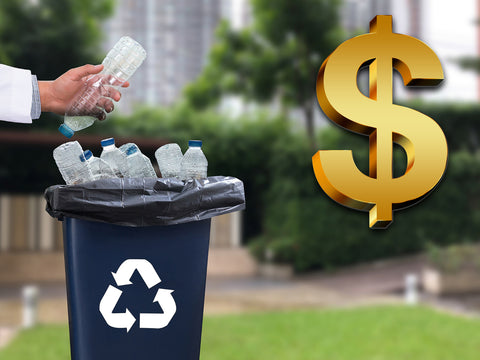
For an effective curbside recycling system, the cost per ton of trash ranges from $50 to $150. General trash and disposal programs cost $70 to $200 per ton of waste. Thus, recycling is a cost-effective solution when it is done in the right way.
Plan your recycling program well and put it into motion. By doing so, you can save plenty and generate revenue in a few years. Here are some tips:
- Find out about the available grants for recycling programs. Look for waste hauler rebates and grants that the government funds.
- Assess the waste hauler pick-up schedule. Agree to a schedule when your dumpsters are full. This will reduce the frequency of pickups and the cost of collection.
- By successful recycling, you can reduce the waste you send to landfills. Find out about the waste and items you can recycle from your local collection center.
- Buy proper recycling containers to help in better recycling. For instance, a container with two or three slots can help sort the waste. You can put paper, plastic, and metal in separate slots. Or, keep separate bins for plastic recycling.
- Invest in quality recycling bins with many slots to avoid contamination of the items. When you contaminate the recyclable items, all the items will become reusable. They end in landfills and cost you money.
- Label the recycling bins for easy and clean collection. This will avoid contamination of the recyclable items. You can find bins that have labels on them or you can get customizable bins. Then, you can label them as per your indoor and outdoor needs.
Where does the US send their recycling?
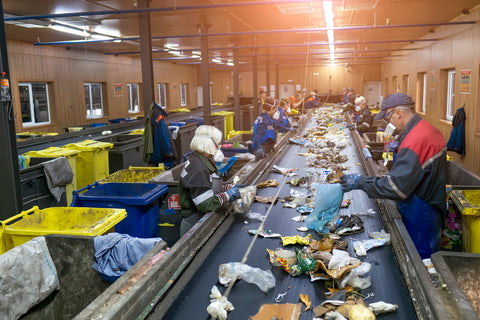
The United States ships a major part of its plastic waste overseas. The EPA reports that the country sent more than half of this waste to China and Hong Kong in 2015. The countries process and reuse the valuable plastics. New products from recycling are sold back to the US.
But, a major part of the recycling was unusable due to contamination. The waste thus ended up in landfills in China. But, they put a ban on the import of recyclable waste. Since then, the U.S. sends the materials to other countries. Vietnam and Malaysia are some of the countries that the country sends its recyclables to.
Which state has the best recycling program?
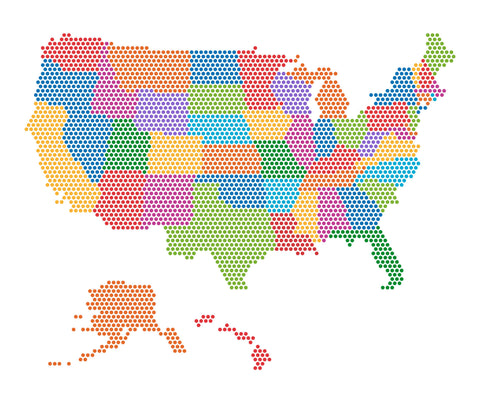
Vermont is the state which ranks first in having a proper waste management program. It has the greatest number of recycling facilities. The state bans using single-use plastic bags. Other states that enforce the ban include Hawaii, California, New York, and a few others.
Oregon is the second state with the best waste management. The state has the highest energy production from renewable resources. It also ranks fourth in the number of green buildings present per capita.
What states have recycling laws?

The local and state governments have separate recycling rules. Many of the states collaborate with non-profit groups. This helps in making their recycling program a success. Here is a rundown on the different recycling rules in the various states:
- Landfill bans are in place in states like Wisconsin, Michigan, and a few more.
- 25 states have e-waste recycling laws of some form or the other.
- Seattle charges fines to people who throw away recyclable items.
- California and Minnesota also have strict recycling laws for sporting and business facilities.
- States like Hawaii, Vermont, and more refund five percent per recycled bottle or can.
Am I doing it right?

Many of you know about recycling and its uses. But, you may not know whether you are doing it right or not. Depending on your location, the recycling rules may vary.
Some areas have people using a single bin for recycling. In others, people may use separate bins. In some localities, there is a curbside system in place. A few areas need you to take the items to the nearest processing facility.
Remember that whatever you are dumping in the recycling bin is not all recyclable. So, here are a few tips for proper recycling:
1. Know about recyclable items
Make sure you know which are the common recyclable items. Materials like paper and plastic come to the mind immediately. Aluminum and glass items are reusable. A simple way to know which items are eligible is by contacting your local recycling center. Have a recycle bin for plastic and another for items such as paper. Things like hoses, propane tanks, needles, etc. are not recyclable. Throw them in the general trash bin.
2. Clean containers
Any food residue or other fluids in the recyclable items can contaminate them. This will make the materials difficult to recycle. If you are using a single recycling bin, this is very important. The food and fluid remnants can soil the paper trash you put in the bin. Keep aside a separate kitchen trash bin for the food items. Compost the food debris in your garden.
3. Avoid bagging the recyclables
Storing the recyclables in a plastic bag makes your entire effort go to waste. Most of the time. recycling facilities send the bagged stuff to landfills. They do not feel it safe to open the bags and further it takes more time to sort them.
4. If in doubt, throw it away
Despite knowing about recyclable items, you may still be unsure. If this happens, throw the materials in the trash. Such items go to landfills. But, even if you put it in a recycling receptacle, it can meet the same end if it is not recyclable. Recycling facilities spend a lot of time removing non-recyclable items. Some tangle up and damage the recycling equipment.
Final Takeaway
There is a lot more to recycling than you know about. These key steps and tips will make you more aware of the process. When you understand what this process is, it is easier to follow it. You will be less confused about what to do with your trash.
One effective way to make this program easier is to have a suitable recycle bin at home or work. Separate containers make it easy to sort your trash. Look for receptacles with more than one slot. For quality trash bins and recycling containers, visit Trash Cans Depot.

